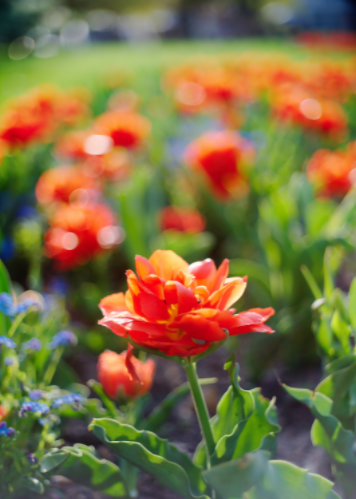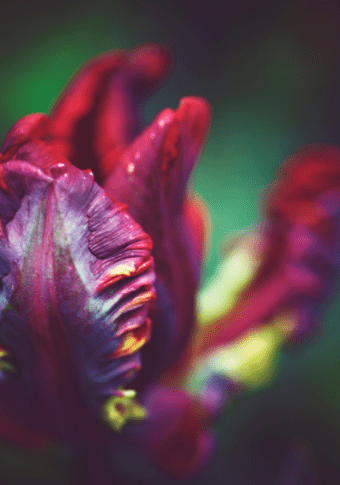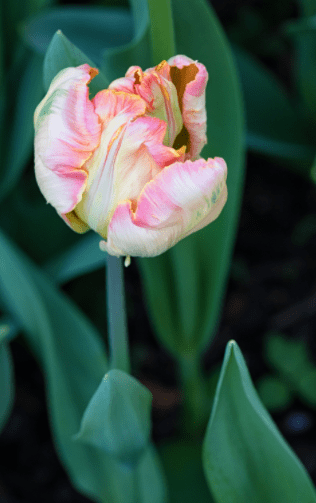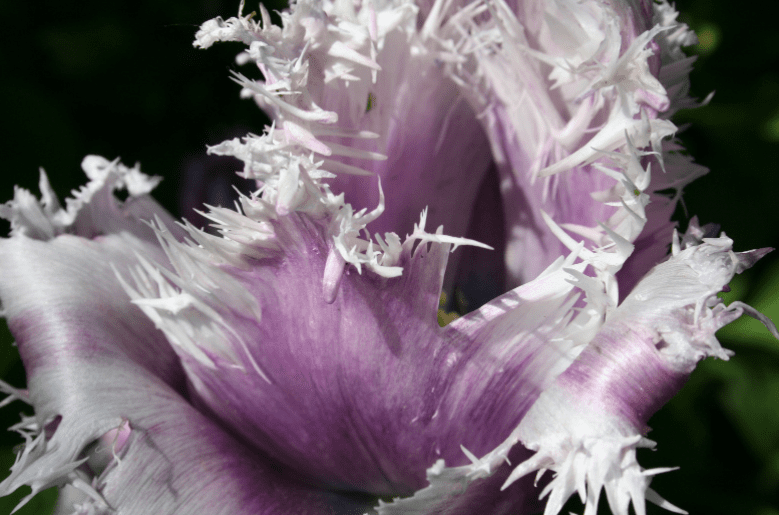Parrot Tulip Bulbs
Yes, parrot tulips are unusual, and they may turn traditional gardeners away. They are, nevertheless, the most prized of all for those who enjoy fresh and interesting forms.
Tulips with extremely colorful blossoms are known as parrot tulips. Artists and free spirits who value originality and nuance will enjoy them. Whether as cut flowers or in gardens, highbrow designers gravitate toward their strange shapes and hues as the most stylish moderns.
Once the genetic material in tulip plants goes crazy during cell division, parrots develop by chance. Color and form are not inherited in de novo mutations, which occur at odd moments in the plant’s life cycle. Cuttings or bulbs will be used to proliferate these individuals asexually.
Parrot Tulip History
Prior to the twentieth century, parrots were uncommon and despised because their stems were notoriously twisted, making them unsuitable for traditional bouquets.
They liked to flop around in gardens and lie in the mud. Parrots experienced a revival after the discovery of the stiffer-stemmed “Fantasy” in 1910. They are becoming one of the most popular bridal flowers.
Growers in Holland, where tulip breeding has been elevated to both high art and cutting-edge science, are continually on the lookout for mutations, which frequently result in the creation of a new parrot tulip type.
It is commonly known that radiation can interfere with cell division, increasing the likelihood of mutants emerging. Tulip fields are exposed in their entirety, and the ensuing blossoms are examined for symptoms of malformation.

The direct administration of cytokinins to the tulip plant is another way of forcing mutations. Plant growth hormones called cytokinins encourage cell differentiation.
Certain cytokinins, for example, can trigger an orchid flower stalk to grow roots. The breeders know just which hormones to use to encourage the most mutations.
Petals with feathery edges can be produced by parrots in a variety of textures and densities. The petals may twist, wave, or curl in unusual directions. For numerous hues, the colors may show flame differences.
Parrot Tulip Varieties
“Rococo,” a vibrant crimson with green, yellow, and purple curled embellishments at the base of the petals, is one of the most exotic.

The exotic “Black Parrot” has more feathery petal edges. The feathering of “Orange Favorite” is deeply lobed and enhanced with green and black flares.

With its changing petal effects and rich colors, “Apricot Parrot” is equally at home in a tropical environment as it is in a cottage-garden border.

The wildness of the parrot tulip gives the perfect foil to the straight lines and pristine fields of today’s modern design style. It dares to stand out, wearing satins and sequins even when doing the most mundane of tasks.
Allow the parrot to become a representation of your own personality for the new gardener who has never planted bulbs before.
Growing Parrot Tulips
Plant parrot tulip bulbs in clear sunshine and abundant, good-drained ground any day between early autumn and November. Choose a site sheltered from the severe wind, as lengthy-stemmed parrot tulip flowers are delicate.
Seed the bulbs about 5 inches (12.5 cm.) deep, with 4 to 6 inches (10 to 15 cm.) between each bulb.
Water slightly after planting, then coat the area with 2 to 3 inches (5 to 7.5 cm.) of shredded bark, pine needles, or alternative organic compost.
Care of Parrot Tulips
Eliminate the compost as promptly as your parrot tulip flowers germinate in spring. This is again the time to start supplemental watering, which should take place weekly until the flowers fade in early summertime.
Employ a hose or drip technique and don’t harm the blossoms by sprinkling from above. Feed the tulips every month during the cultivating period, applying a stabilized fertilizer with an NPK proportion such as 10-10-10.
Separate blossoms and flower stem as shortly as parrot tulip flowers fade but don’t take out the vegetation until it dies down and turns yellow. This is crucial, as the green vegetation assimilates energy from the sunshine, which yields food that powers the bulbs for the next blooming time.
Dig up parrot tulip bulbs after the vegetation dies down. Store the bulbs in a warm, dry area until the warmth drop in autumn, then replant the bulbs. Remove any bulbs that look deformed, infected, or rotted.























